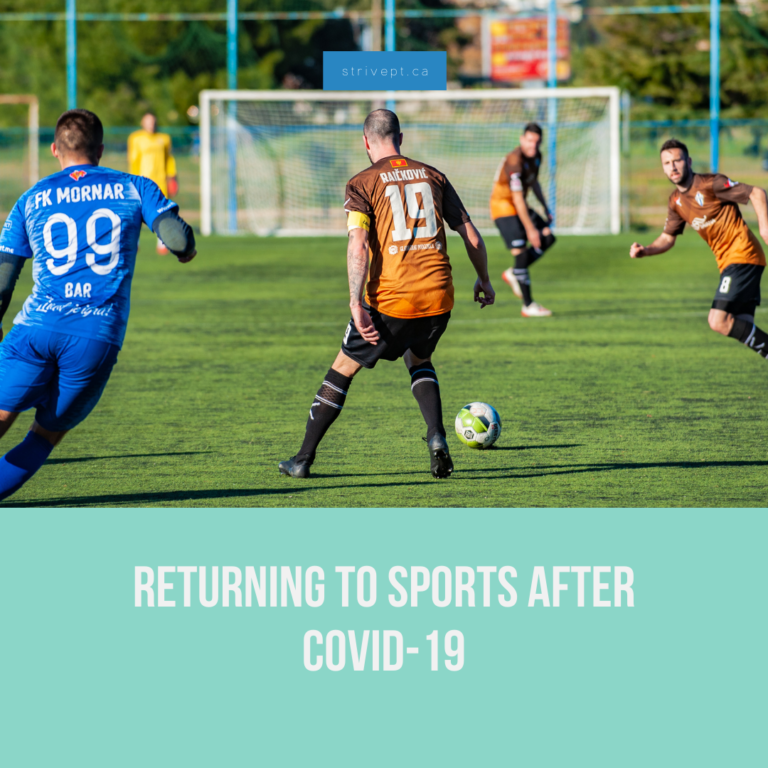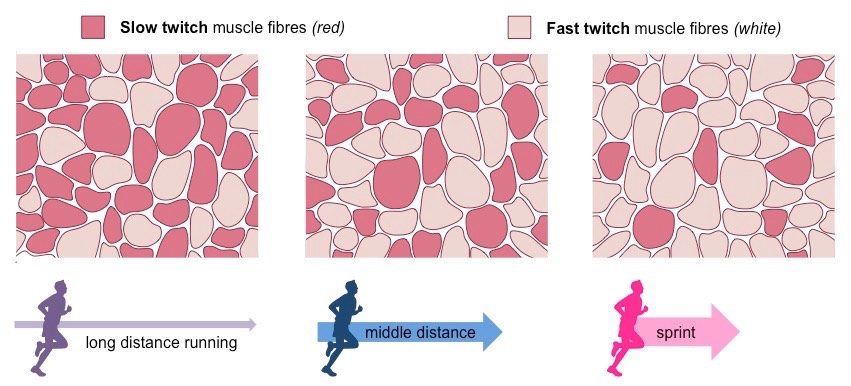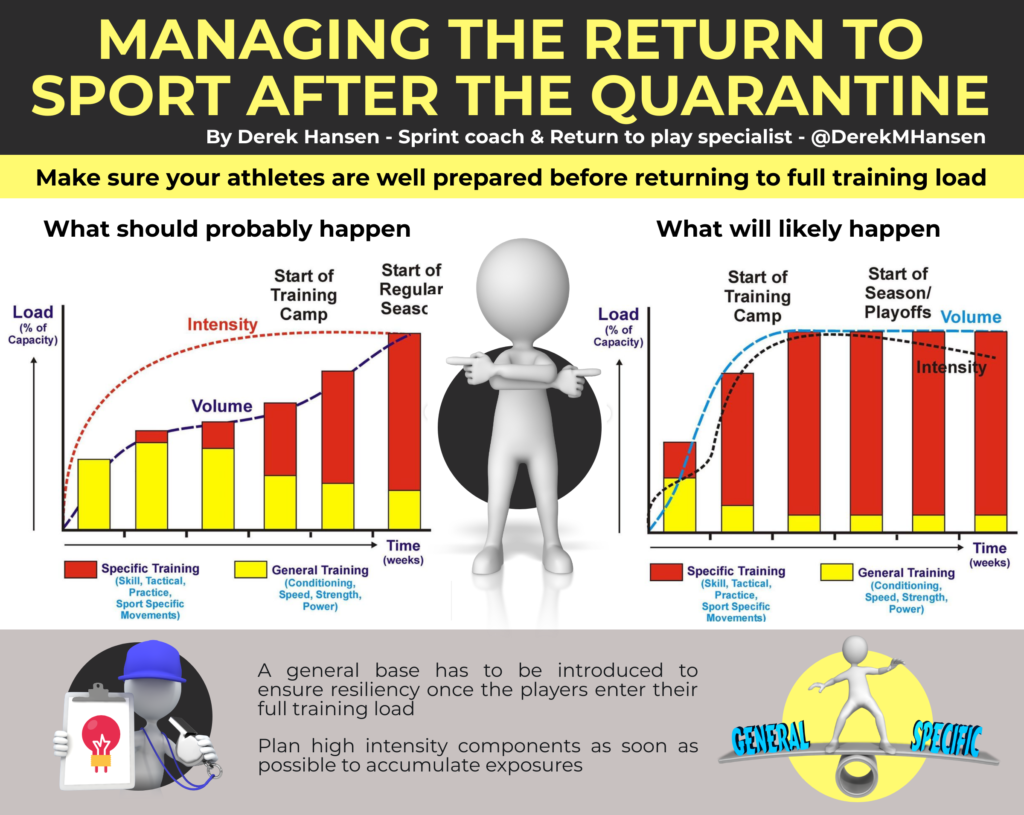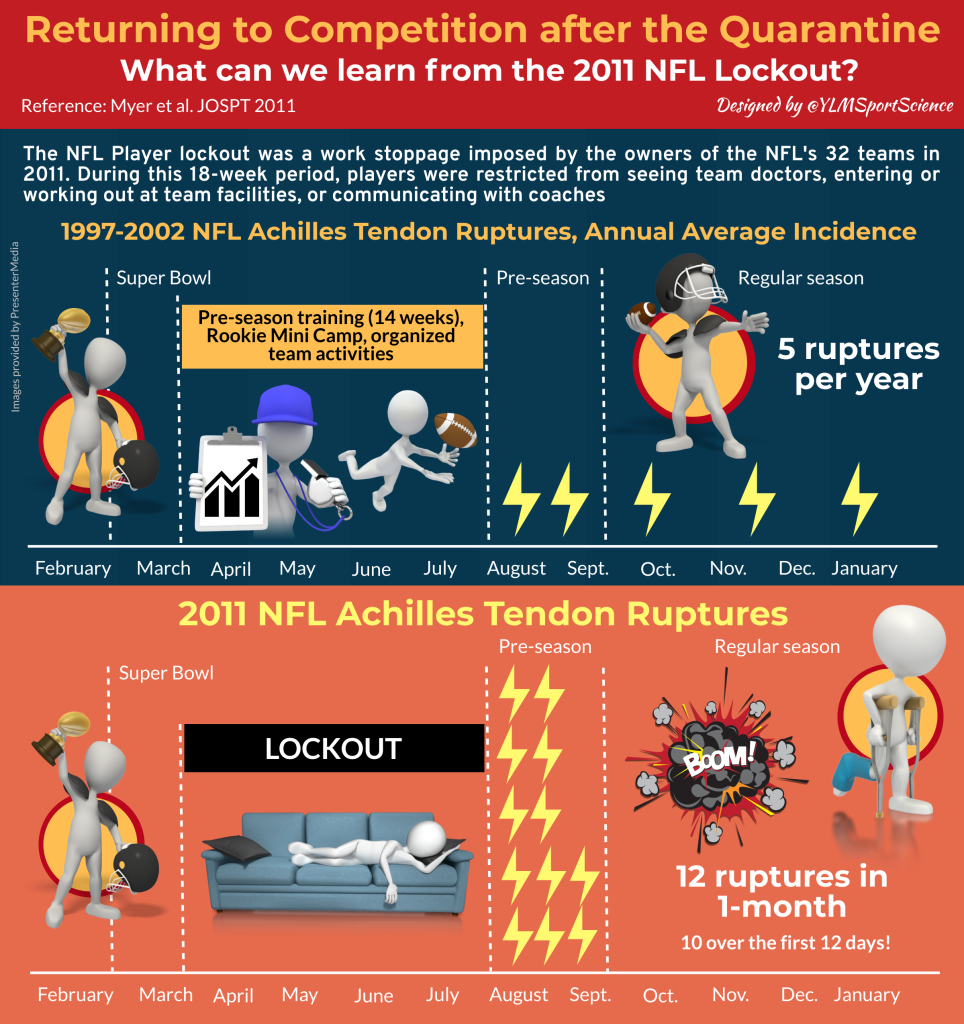
With the world currently experiencing a global pandemic, there are a lot of uncertainties for what the future may look like. This situation has forced us all to modify the way we live, and to be conscious of the things we do each day.
At times like these, it can be hard to know what the most appropriate thing to do is in each situation. It can also be hard to determine when things will start to feel more normal again and what that new normal may look like.
One big area of concern is what sports will look like as they start to resume. Along with this concern is the question of how best to return to sport once we are allowed.
What will returning to sports look like during COVID-19?
When we engage in sport, or really any type of exercise, our bodies start to adapt in different ways. While these adaptations will occur in many different parts of our bodies, today we will focus on the adaptations that occur within the musculoskeletal system.
Usually, we only think of our muscles as getting stronger when we exercise, but in fact our ligaments, tendons, bones, and cartilage all adapt and get stronger as well! Let’s discuss some of the ways these parts of our body get stronger as we exercise.
Muscle Adaptations to Exercise
To start off, we all know that our muscles get stronger when we exercise them, especially with resistance exercises, such as weight lifting. This can occur through multiple pathways.
Our muscles are made up of two distinct muscle fiber types: fast twitch and slow twitch muscle fibres. The fast twitch fibres are responsible for short duration muscle contractions with high force production. These are the muscle fibres that will activate when lifting a heavy weight or sprinting a short distance.
In contrast, the slow twitch muscle fibres are responsible for muscle contractions that produce low force over a long duration of time. These are the muscle fibres that will be responsible for endurance exercise, such as a long distance run. As such, resistance training like weight lifting can lead to increases in fast twitch muscle fiber size, which ultimately leads to increases in strength.
Endurance training does not lead to significant increases in muscle fiber size, but instead improves the ability of our muscles to use oxygen. This will lead to improvements in muscle endurance. While these two adaptations occur directly within our muscles, there will also be relevant adaptations in the nerves that control our muscles.
Our nervous system activates motor units within our muscles in order to contract and relax them. Exercise leads to changes in our nervous system’s ability to activate our muscles, otherwise commonly known as our “mind muscle connection.” As such, we may experience increases in muscle strength or endurance without changes in the muscle fibres!
Tendon and Ligament Adaptations to Exercise
Similar to muscles, our tendons and ligaments will adapt to both resistance and endurance exercise. Our tendons connect muscles to bones, while our ligaments connect bones to each other. Both tendons and ligaments are made up of collagen fibres.
In response to exercise, they will adapt by increasing the size, number, and density of collagen fibres. This will in turn increase the cross-sectional area of the tendon or ligament, which means they will get thicker. The tendons and ligaments will also get stronger and more resilient to stress forces as a result of their increase in size.
It is important to note that these structures will also increase in strength at their insertion sites (i.e. where they attach to bone). These are often sites of injury, and so their adaptations play a key role in safe return to sport.
Bone Adaptations to Exercise
Our bones also undergo large changes in structure as a result of exercising. Whether we exercise or not, our bone cells are constantly breaking down and building new bone tissue.
The balance of bone breakdown and bone building determines whether our bones will get stronger or weaker over time. This balance can be altered by external factors such as mechanical loading.
In other words, the amount of stress and force we place on our bones will influence the size and strength of them.
Furthermore, the direction of the forces placed on our bones will also impact the way in which their fibers are oriented. For example, the bone fibers in our vertebrae (our spinal bones) are oriented in a longitudinal direction (straight up and down).
This is a result of our spines being exposed to the vertical forces of gravity pushing down on our vertebrae and the ground pushing back up.
Another example of this adaptation is seen in the forearm bones of tennis players. Research has found that the ulna (a forearm bone) of the arm that holds the racket can have a 5 to 10% increase in bone mass when compared to the opposite arm in the same tennis player!
The frequent stress applied to the forearm as a result of holding and swinging a tennis racquet leads to micro deformations within the bones. These deformations cause our bones to adapt and increase production of new bone, ultimately leading to increased bone mass.
Cartilage Adaptation to Exercise
While the cartilage in our body is very different from some of the other structures we have discussed already, it undergoes adaptations with exercise as well.
We have cartilage for 3 main reasons:
1. to maintain a frictionless surface for our joints,
2. to increase our joint surface congruence (how well bones fit together in a joint),
3. and to absorb stress forces (e.g. to absorb the force from landing during a jump).
Unlike the previously mentioned structures, cartilage does not have a blood supply. As a result, it must maintain its health and integrity by other means. Instead of receiving nutrients from blood, our cartilage gains its nutrients from loading and unloading.
What exactly does that mean? Let’s look at an example:
In our knees we have lots of cartilage on the surface of where our femur (thigh bone) and tibia (shin bone) connect. When we engage in an activity such as walking, we are putting our weight through each knee one at a time.
When we bear weight through our right knee, it is loaded. When we lift up that right knee, it is unloaded. Our cartilage requires both of these components of movement to maintain its health and integrity.
This same concept of unloading and loading happens in our non-weight bearing joints as well (e.g. shoulders, elbows, wrists) with general movement. When we have too much unloading or too much loading, our cartilage won’t get an appropriate amount of nutrients, and can start to become painful.
When we have the right amount of loading and unloading, our cartilage adapts. Some research shows that our cartilage increases in thickness with exercise or loading, while other research contradicts this. However, most research has reached a consensus that exercise is essential for maintaining cartilage thickness, and that our cartilage will improve in quality with exercise.
What happens when we stop exercising?
When we stop exercising for a prolonged period of time, our body no longer receives the stimuli required for it to adapt. All of the adaptations previously mentioned will come to a halt. If we continue to avoid exercise for long enough, our body will actually start to reverse the adaptations that were previously made. Let’s take a look at each body part mentioned above to determine the specific effects of prolonged rest.
For our muscles, prolonged rest will lead to a decline in muscle size, strength, and endurance, otherwise known as atrophy.
As mentioned before, fast twitch muscle fibres are responsible for strength, while slow twitch muscle fibres are responsible for endurance. Slow twitch fibres will actually atrophy at a quicker rate than fast twitch fibres, meaning we will lose muscle endurance first, and then muscle strength and size. For tendons and ligaments, prolonged rest leads to a decrease in size and strength, ultimately making them weaker and more susceptible to injury.
After prolonged rest, our bones will also decrease in mass and strength. Again, this may increase our susceptibility to bone injuries, such as fractures.
Similar to the structures previously mentioned, our cartilage will decrease in thickness in response to prolonged rest. Furthermore, the quality of our cartilage will also decline. These changes may lead to a decrease in the ability of our cartilage to tolerate stressful forces, ultimately increasing risk of injury.
As you can probably tell at this point, prolonged rest leads to a lot of small reverse adaptations within our body that ultimately lead to one outcome: increased risk of injury!
On the plus-side, exercise generally leads to positive adaptations that can help decrease our risk of injury. That being said, if we return to exercising too quickly after a break, this can also increase our risk of injury because our body has not had time to adapt.
So, how do we return to exercise and sports without hurting ourselves? Well, the key is the speed and intensity at which we return. Let me explain.
Graded Return to Sport
Graded return to sport is one of the best ways we can reduce our injury risk. Injuries often occur when we try to do too much exercise too quickly, after doing too little exercise for too long.
We often run into trouble when we jump right back into the activity we were doing before taking time off, at the same intensity and volume as before. Instead, our progression back to sport should be slow, with limited volume (total amount of exercise).
As we can see in the image above, we should start with some general training, such as jogging, cycling, etc. before progressing to more sport-specific training. We should also start with very low training volumes and intensities, and slowly progress to higher volumes and intensities. Unfortunately however, it is common to see the image on the right, where general training is only done briefly, and then quickly progressed into sport specific training. Furthermore, we often see a very quick jump back into high training intensities and volumes. Let’s look at what can happen in this case.
If we take a look at the NFL lockout that happened in 2011, we can see a prime example of returning to sport at too high of an intensity too quickly. In the image above, we can see that normally there are about 5 achilles ruptures per year among NFL players. The lockout in 2011 caused players to have to take a long break from their regular training.
Afterwards, when they returned to sport, we saw a massive spike in ruptures. In fact 12 achilles ruptures occurred in just one month, and 10 over the first 12 days!
There is an important lesson to be learned from this, and that is the importance of graded return to sport. Based on all of the adaptations that we know occur with exercise, we could have decreased the number of achilles ruptures by decreasing the speed and intensity of return to sport.
If these players had more time to let their bodies adapt again after having such a long period away from sport, we likely wouldn’t have seen the rapid injury rate that occurred.
How quickly should I be returning to sport?
At this point, you’re probably wondering what the right speed and intensity is for you to return to sport after the COVID-19 shutdown. Well, unfortunately there is no perfect answer to this question, as there are a variety of different factors that will play a role.
For example, recovery time, sleep, stress, diet, and hydration will all play a role in how quickly you will be able to return to sport with a low risk of injury. That being said, a general rule of thumb is a progression of about 10% per week. It is okay to progress faster than this, although a progression of 30% per week or more may lead to a greater risk of injury.
We can use this number for both volume and intensity. If you are returning to a sport that involves running, it will be important to look at both your total amount of running as well as your running speed. A progression of 1 extra km per run may not seem like much, but if we look at a weekly total, it can be easy to accidentally exceed a 30% progression. While a progression of only 10% per week may feel slow, this can ultimately speed up the rate at which you return to sport.
Have more questions or concerns about what your return to exercise will look like? We are here to help! Head over to www.strivept.ca and book your initial assessment today.
Liam Newlands
Physiotherapist at Strive Physiotherapy & Performance
Resources:
Brumitt, Jason, and Tyler Cuddeford. “Current Concepts of Muscle and Tendon Adaptation to Strength and Conditioning.” International Journal of Sports Physical Therapy, Sports Physical Therapy Section, Nov. 2015, www.ncbi.nlm.nih.gov/pmc/articles/PMC4637912/.
Klein-Nulend, J, et al. “Mechanical Loading and How It Affects Bone Cells: The Role of The Osteocyte Cytoskeleton in Maintaining Our Skeleton.” European Cells and Materials, vol. 24, 2012, doi:10.22203/eCM.v024a20.


